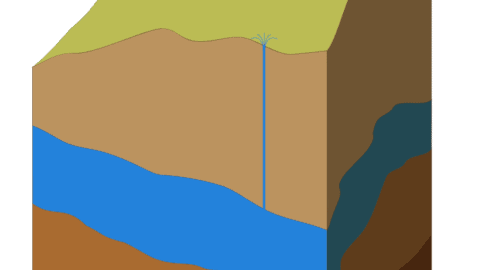Considerations regarding environmental impact and sustainability are always at the front of mind on utility projects around the country. For suppliers of plastic pipe, it’s a keen consideration too – and now, two Australian manufacturers of plastic pipe have developed Environmental Product Declarations for their products, giving their customers verified information about the life cycle impact of their pipes.
Environmental Product Declarations (EPDs) are thirdparty verified documents based on ISO14025 and EN15804 Standards, that communicate transparent and comparable information about the life cycle environmental impact of a product or service.
Specifically, product declarations include information on the environmental impact of raw material acquisition, energy use and efficiency, composition of materials and chemical substances, emissions to air, soil and water, and waste generation.
EPDs are of great assistance to customers weighing up many different products, such as builders and developers seeking to construct environmentally responsible buildings and infrastructure.
The fact that EPDs present key environmental product performance data in a uniform format make them particularly beneficial.
By referring to a manufacturer’s EPDs, customers are also armed with the evidence they require to claim credit points under the Green Building Council of Australia and the Infrastructure Sustainability Council of Australia’s rating systems.
Manufacturers in Australia can apply to create an EPD for their products in the Australasian EPD Program, which operates in alignment with the International EPD System.
Having an EPD for a product does not imply that the declared product is environmentally superior to alternatives — it is simply a transparent declaration of the lifecycle environmental impact.
The overall goal of an EPD is to provide relevant and verified information to the customer and industry.
An important aspect of EPDs is to provide the basis of a fair comparison of products and services by their environmental performance.
EPDs can reflect the continuous environmental improvement of products and services over time, and are able to communicate and add up relevant environmental information along a product’s supply chain.
EPDs and plastic pipe
Iplex and Vinidex have acted as first movers in the plastic pipe industry by developing their own EPDs through the Australasian EPD Program.
The EPDs have been produced by Edge Environment, and have undergone thorough third party critical review by Catalyst.
These EPDs cover pressure and non-pressure PVC pipes, and also polypropylene (PP) pipes. EPDs are also currently being developed for PE pipe products.
The results of the Iplex and Vinidex life cycle assessment work show that the world leading technologies employed in the Australian plastic pipe industry provide significant environmental benefits:
- Lower density foam core PVC nonpressure pipe utilises internal scrap, is lighter weight and can reduce embodied carbon per pipe length by up to 75 per cent
- Oriented PVC (PVCO) material allows for exceptionally tough, impact resistant and ductile pipe, with less material and reduced embodied carbon per pipe length by up to 50 per cent
- Modified PVC (PVCM) material allows for the optimum combination of strength and ductility with a thinner wall, less material and reduced embodied carbon per length of pipe by up to 15 per cent.
Iplex Pipelines first published its suite of verified and registered International EPDs in December 2015. The declarations cover their BlackMAX and SewerMAX polypropylene drainage pipes; ApolloBLUE, Rhino and Iplex Premium PVC pressure pipes; along with foam core and solid wall DWV pipe and conduits.
The suite was extended in May 2016 to include polyethylene pressure and nonpressure pipes and conduits.
The polyethylene pipe range includes Poliplex pressure pipes for water and gas; Sewerplex nonpressure sewer pipe; Greenline, an economical water pipe for rural irrigation applications; Thermapipe, the mining slurry pipe supplied with a white outer skin for high solar reflectance; and the new Millennium high stress crack resistant pipe for trenchless installation and high value assets.
The EPDs produced by Vinidex cover their StormPRO and SewerPRO polypropylene pipes; PVC nonpressure pipes and conduits used in buildings; and PVC pressure pipes.
Developing an EPD
EPDs can be developed across a wide range of sectors involved in the construction industry.
There are five steps to follow in order to create, register and publish an environmental declaration in the International EPD System:
- Find or create relevant product category rules (PCRs) for the product category
- Perform a life cycle analysis study based, on the PCRs
- Compile an EPD Report
- Submit EPD report for verification and certification
- Register and publish your EPD.
The International EPD System is open to EPDs for any type of goods or services. An EPD may be published by a single company or by a group of companies as a sector EPD.
















